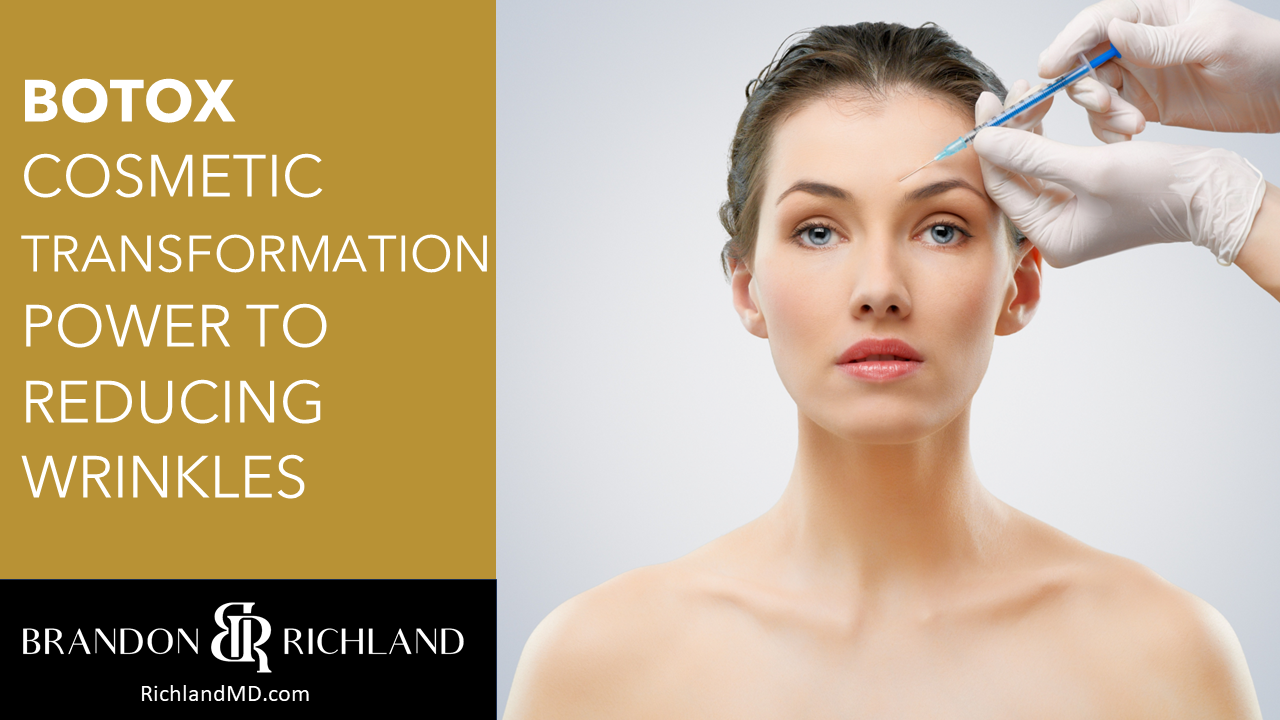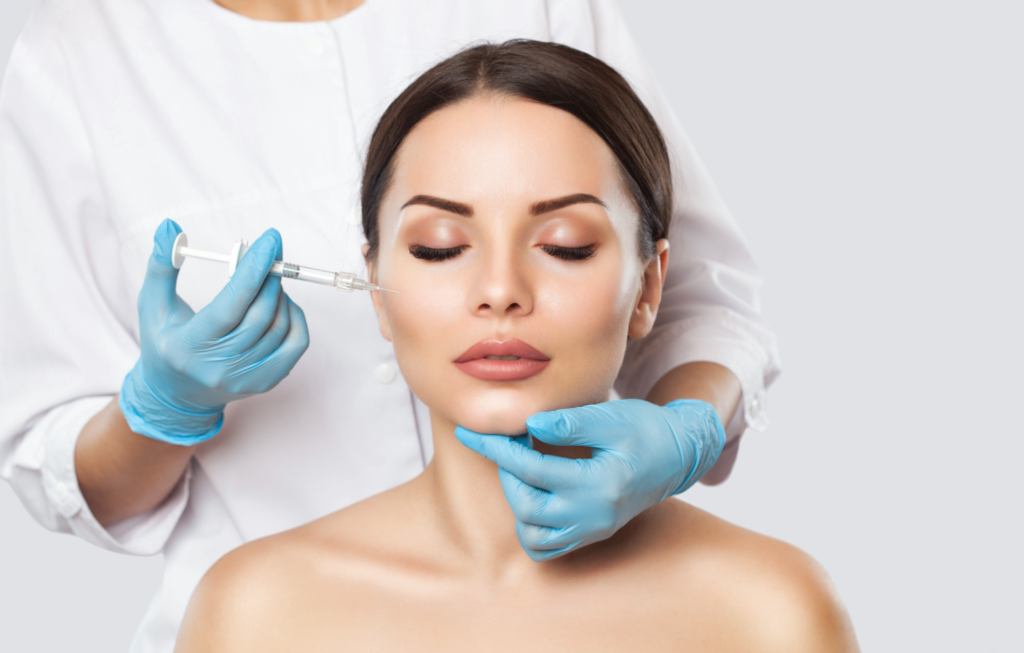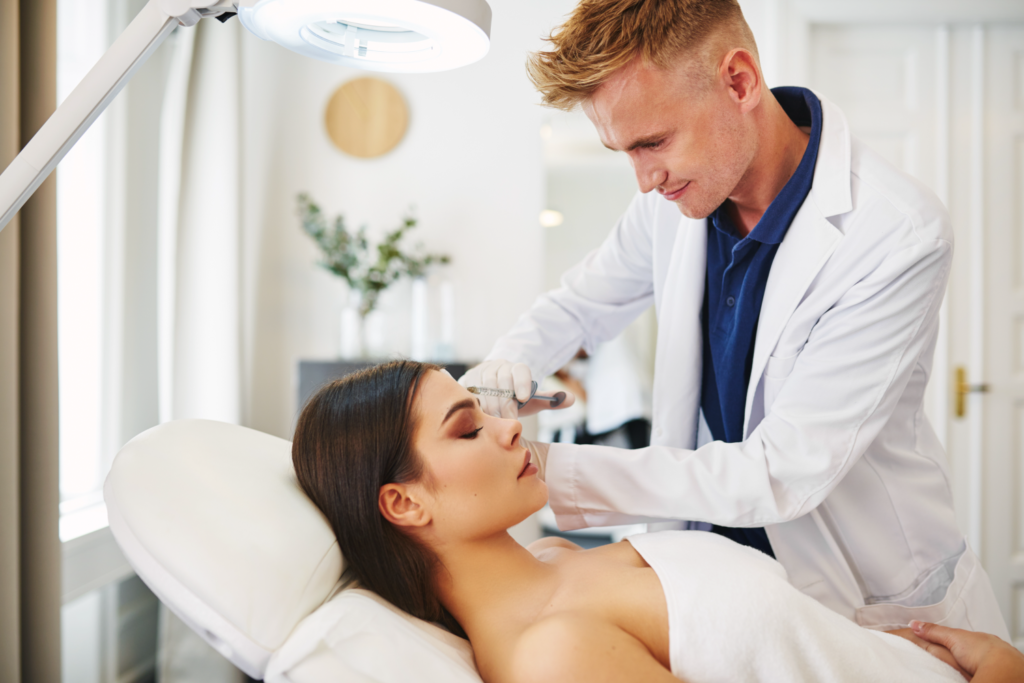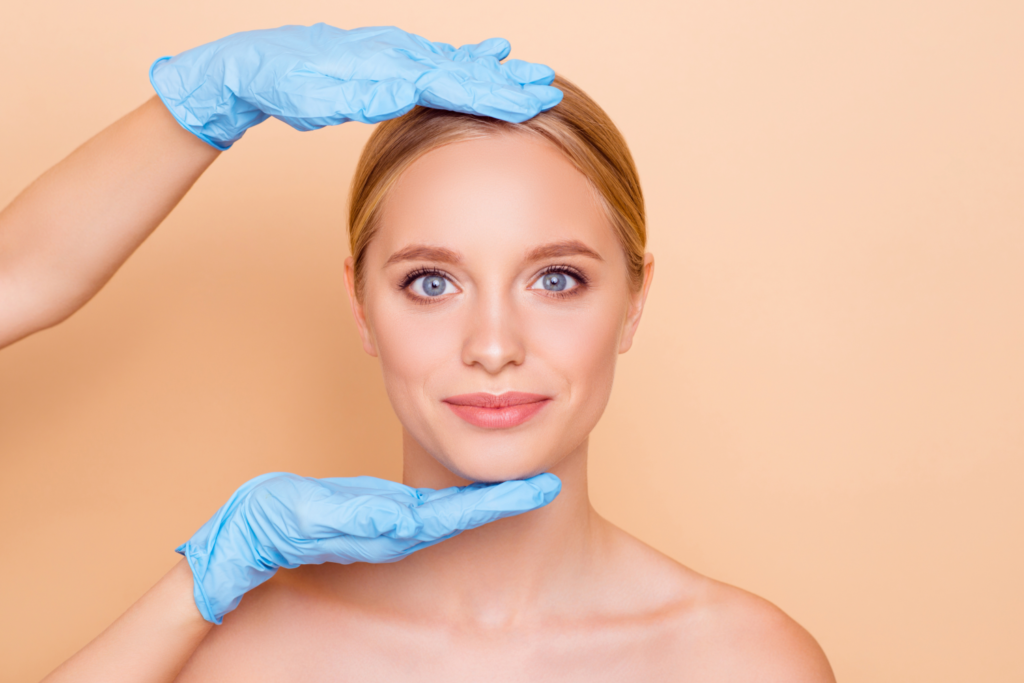Published by Dr. Brandon Richland, MD

Botulinum toxin injection commonly known as Botox, has become a household name over the past few decades. This powerful protein, derived from the bacterium Clostridium botulinum, holds a dual reputation in modern society, serving both as a cosmetic enhancer and a medical ally.
In the realm of aesthetics, it is lauded for its ability to reduce the appearance of wrinkles and fine lines, offering individuals a non-surgical option for maintaining a more youthful complexion. Its functionality, however, is not solely skin deep, as Botox has also proven to be an effective treatment for a variety of medical conditions.
The applications of Botox in medicine are broad and impactful, highlighting the versatility of this neurotoxin. From mitigating chronic migraines and addressing muscle spasticity to treating conditions like hyperhidrosis and certain types of eye disorders, Botox has secured FDA approval for a diverse spectrum of therapeutic uses.
As with any medical procedure, the administration of Botox is subject to specific expectations, potential side effects, and necessary precautions. No matter how common it becomes, the importance of consulting with a qualified healthcare provider before undergoing any botulinum toxin treatment cannot be overstated.
Key Takeaways of Botox
- Botox’s uses span from cosmetic procedures to treat wrinkles to medical treatments for chronic conditions.
- Consulting a healthcare provider is crucial to ensure the safety and appropriateness of Botox procedures.
- Understanding the procedure, potential side effects, and recovery process is essential for anyone considering Botox.
Overview of Botox
Botox injection, known scientifically as Botulinum toxin injections, has become a widely used treatment for both cosmetic and medical purposes. With its origins dating back several decades, Botox injections utilize a purified form of neurotoxin derived from Clostridium botulinum to temporarily reduce muscle activity.
What Is Botox?
Botox injections contain onabotulinumtoxinA, a neurotoxin that temporarily paralyzes muscles. By blocking nerve signals in the muscles where it is injected, Botox can alleviate conditions linked to overactive muscles and glands.
Other forms similar to onabotulinumtoxinA are abobotulinumtoxinA and incobotulinumtoxinA, each with specific indications and uses. Botox’s effectiveness in smoothing out facial wrinkles and reducing certain muscle-related conditions makes it a popular choice for patients seeking non-surgical treatment options.

Botox Cosmetic Applications
Botox Cosmetic is widely recognized for its cosmetic applications, particularly for reducing the appearance of wrinkles on the face. These treatments target specific areas to create a smoother, more youthful complexion.
Treatment for Wrinkles
- Uses: Botox Cosmetic is primarily employed to diminish the visibility of facial wrinkles. It works by temporarily relaxing the muscles that contribute to wrinkle formation.
- Benefits: Patients usually notice a significant softening of their wrinkles, contributing to a refreshed and rejuvenated appearance.
Forehead Lines and Frown Lines
Botox Cosmetic is an effective solution for softening:
- Forehead Lines: Horizontal wrinkles that develop across the forehead due to habitual expression and aging.
- Frown Lines: Vertical lines that appear between the eyebrows, often giving a person a concerned or displeased appearance.
Crow’s Feet and Eyelid Rejuvenation
- Crow’s Feet: These are lines that fan out from the corners of the eyes, often becoming more pronounced with age. Botox Cosmetic treatment can noticeably reduce their appearance.
- Eyelid Rejuvenation: Botox may also be used around the eyelid area to create a more awake and youthful look, although this application requires a specially trained professional to ensure safety and effectiveness.
Medical Uses of Botox
Botox, known for its cosmetic applications, is also a significant treatment for various medical conditions. It provides relief from symptoms such as muscle spasms and excessive sweating.
Chronic Migraine Management
For individuals experiencing chronic migraine, which is defined as having headaches on 15 or more days per month, Botox can be a game-changer. Administered every 12 weeks, it can reduce the frequency of headaches.
Cervical Dystonia
When it comes to cervical dystonia, a painful condition where neck muscles contract involuntarily, Botox injections help by easing muscle tension and discomfort.
Hyperhidrosis Treatment
Individuals suffering from hyperhidrosis, or excessive sweating, especially under the arms, can find relief through Botox. It works by temporarily blocking the nerves that stimulate sweating.
Overactive Bladder and Incontinence
Botox has proven effective for the treatment of overactive bladder symptoms. In cases of urinary incontinence caused by an overactive bladder, Botox injections can help to reduce incidents of leakage.
Procedure and Expectations
Before considering Botox, one should understand the injection process, what can be expected post-treatment, and the typical duration of effects, along with ongoing maintenance requirements.
The Injection Process
Botox injection, a purified form of botulinum toxin, is administered through injections to targeted areas to temporarily reduce muscle activity. The procedure, which typically lasts about 10 to 15 minutes, is considered safe and effective when performed by a licensed professional.
Patients may experience mild discomfort, akin to a pinch, as the needle enters the skin. Post-injection, minor pain, bruising, or swelling might occur.
What to Expect After Botox
Following the procedure, patients generally notice results within 24 to 48 hours, with improvements in the appearance of lines and wrinkles.
One should anticipate some potential temporary side effects, including headaches or flu-like symptoms. It’s important to avoid rubbing or massaging the treated areas, as this can cause the toxin to spread to unintended muscles.
Duration of Effects and Maintenance
The effects of Botox are not permanent; they typically last three to four months. As the muscle action gradually returns, so will the lines and wrinkles, necessitating follow-up treatments for maintained results.
Repeated treatments can sometimes lead to longer-lasting effects, as muscles become conditioned to a state of reduced activity.
Potential Side Effects
Botox injections are widely used for both cosmetic and medical purposes. While they are generally considered safe, they can be associated with a range of side effects. It’s important for individuals considering the treatment to be aware of both common adverse reactions.
Common Adverse Reactions
- Bruising and Swelling: A common side effect of Botox injections is bruising and swelling at the injection site. These effects are typically mild and resolve within a few days.
- Flu-like Symptoms: Some patients may experience flu-like symptoms following Botox treatment, including fever and fatigue.
- Rash: A rash or itching may occur at the injection site or in surrounding areas.
- Drooping: Facial drooping can occur, particularly with cosmetic uses, if the toxin affects surrounding muscles.
Comparison With Other Treatments
In the realm of cosmetic procedures, Botox is often compared to dermal fillers and alternative neurotoxins because each offers unique benefits for treating and preventing signs of aging. Patients may choose one over another based on longevity, results, and application areas.
Botox vs. Dermal Fillers
Botox and dermal fillers serve different purposes; Botox freezes muscles to prevent wrinkles, while fillers volumize to smooth out skin folds. Botox is primarily used for expression lines such as crow’s feet and forehead wrinkles. In contrast, fillers are used to plump areas that have lost volume over time, like the cheeks or lips.
Alternative Neurotoxins
Several neurotoxins similar to Botox are available on the market, including Dysport, Xeomin, and Jeuveau.
- Dysport is known for having a quicker onset than Botox, and its diffusion can cover a broader area, making it suitable for larger treatment zones.
- Xeomin is unique because it contains just one ingredient without any additives, potentially decreasing the likelihood of forming antibodies against it, which can lessen the effect of treatment over time.
- Jeuveau is a newer arrival, specifically approved for treating frown lines; its structuring and efficacy are similar to Botox.
Regulations and Approval
Before Botox can be administered to patients, it must undergo a stringent approval process and meet specific regulatory requirements. Health care professionals administering Botox need to be fully aware of these guidelines to ensure compliance and patient safety.

FDA Approval Process
The Food and Drug Administration (FDA) is responsible for the regulation and oversight of prescription medication, including Botox. Before receiving FDA approval, Botox was subject to extensive clinical trials to evaluate its safety and effectiveness.
Once the FDA deems a product like Botox safe for use and effective for specific conditions, it becomes available by prescription for approved indications. The FDA continues to monitor the drug post-approval through reporting programs and additional studies to ensure ongoing safety.
Legal Considerations for Providers
Providers must adhere to the laws and regulations dictated by the jurisdictions in which they practice. In the USA, the qualifications required to administer Botox can vary significantly by state. These regulations often stipulate the level of medical training required, supervision conditions, and whether specific medical professionals, such as nurses or physician assistants, are permitted to inject Botox.
It is critically important for providers to be familiar with and follow their state’s regulations to administer Botox treatments legally and safely.
Cost and Accessibility
When considering Botox treatments, cost is a primary factor for many, while accessibility addresses how easily patients can obtain the treatment. Both cost and insurance coverage influence the decision-making process for individuals exploring the option of Botox injections.
Average Cost of Botox
The average cost of Botox can vary widely. In 2020, patients could expect to pay an average of $466 per treatment, with variations depending on geographic location, the experience level of the practitioner, and the number of units required for the desired outcomes. As of 2024, the cost per unit in the U.S. ranges from $10 to $25, with whole treatments potentially reaching up to $2,800.
Insurance Coverage
Health insurance generally does not cover Botox for aesthetic purposes. However, insurance may cover Botox injections when they’re used for certain medical conditions, like chronic migraines. It’s important for patients to consult with their insurance provider to understand coverage specifics related to therapeutic uses of Botox.
Aftercare and Recovery
After receiving Botox injections, patients should follow specific care instructions to enhance the treatment’s effectiveness and minimize complications. Key aspects include managing common side effects and understanding the timeframe for recovery.
Post-Treatment Care
Immediately after Botox injections, patients should apply ice gently to the treated area to reduce any potential swelling or bruising. It is essential for patients to avoid pressing too firmly on the skin where Botox was administered for at least 24 hours to prevent the toxin from spreading to surrounding muscles. Doctors typically recommend:
- Ice Application: A light, intermittent application of a cool compress.
- Activity Restrictions: Avoid strenuous physical activities for 24 hours.
- Facial Care: Be gentle when washing the face or applying makeup.
Managing Side Effects and Recovery Time
Patients may experience side effects such as bruising or headaches following a Botox treatment. Most side effects are mild and resolve without intervention within a few days. To help manage any discomfort, over-the-counter pain relievers may be used, following healthcare provider instructions.
The initial recovery period typically spans the first few days after treatment, during which care should be taken to adhere to post-treatment guidelines. Full results are usually seen after:
Advanced Techniques and Research
The field of plastic surgery is witnessing significant innovations in the administration of Botox. New techniques are being adopted to refine its use, ensuring greater precision and tailored outcomes for patients. For instance, advanced Botox techniques are enhancing patient comfort and treatment efficacy while maintaining a high safety profile.
Ongoing Research and Future Directions
Continuing research in the application of Botox is broadening its therapeutic potential beyond aesthetic improvements. Current Botox studies are exploring its effectiveness in treating a range of conditions, highlighting its role as a versatile medical tool.
Moreover, the future of Botox looks promising with the investigation of novel botulinum toxins and emerging neurotoxin research, potentially leading to enhanced therapeutics for patients.
Frequently Asked Questions About Botox
1. What Are The Potential Side Effects of Receiving Botox Injections?
Individuals may experience side effects such as temporary bruising, headaches, and muscle weakness near the injection sites. In rare cases, Botox can cause more serious side effects, which should be discussed with a healthcare provider.
2. How Long Can One Typically Expect Botox Results to Last?
The effects of Botox are temporary, generally lasting 3 to 4 months, with variations depending on the individual’s response to the treatment.
3. What Should One Anticipate in Terms of Changes Before and After Botox?
Patients can expect to see a reduction in the appearance of lines and wrinkles in the treated areas, which typically become noticeable within a few days and may take up to two weeks to see full results.

Conclusion and Summary of Botox Cosmetic Transformation Power to Reducing Wrinkles
In the realm of plastic surgery, Botox has been a game-changer for both cosmetic and therapeutic applications. Staying at the forefront of innovation, researchers continue to conduct clinical trials to enhance its efficacy and expand its uses.
Given the rich and diverse clinical applications of botulinum toxin, it is imperative to highlight the substantial impacts and considerations of its use in treating different conditions, from severe neck pain, underarm sweating to upper and lower limb spasticity, and even cosmetic enhancements such as the treatment of severe frown lines and crow’s feet.
As the medical community continues to explore the full spectrum of botulinum toxin’s capabilities, it is essential to approach its use with caution, ensuring that the benefits outweigh the risks for each patient. This delicate balance between therapeutic efficacy and safety will remain paramount as botulinum toxin retains its place as a valuable tool in the medical and cosmetic treatment landscape.
Please note that this article is intended for informational purposes only and should not be construed as medical advice. Before making any changes to your treatments, please consult with your healthcare provider to discuss the appropriateness and safety of such changes.
Ready For Your First-Class Cosmetic Experience in Orange County (OC) California (CA)?
Are you located in one of these Orange County (OC) / Southern California cities?
Aliso Viejo, Anaheim, Brea, Buena Park, Costa Mesa, Coto de Caza, Cypress, Dana Point, Fountain Valley, Fullerton, Garden Grove, Huntington Beach, Irvine, La Habra, La Palma, Laguna Beach, Laguna Hills, Laguna Niguel, Laguna Woods, Ladera Ranch, Lake Forest, Los Alamitos, Mission Viejo, Newport Beach, Orange, Placentia, Rancho Santa Margarita, San Clemente, San Juan Capistrano, Santa Ana, Seal Beach, Stanton, Tustin, Villa Park, Westminster, or Yorba Linda?
Plastic Surgeon Dr. Brandon Richland, MD and our Cosmetic Aesthetics Team are ready to help you look and feel your absolute best.
Elevate your confidence and self esteem levels to unfathomable new heights!
Schedule your in-person consultation in our modern and luxurious offices in either Fountain Valley, CA (Main HQ) or our Newport Beach, CA office.
Do you live outside of Southern California or short on time? For your convenience, Virtual Consultations are also available.
Our warm and engaging Team of carefully selected Aesthetics Professionals will make you feel calm, cool, collected, and right at home throughout your entire consultation and surgery process.
Schedule Your Aesthetics Consultation here, or call us directly at 949-867-4496 today.
About the Author

Dr. Brandon Richland, MD is a respected Board Certified Licensed Plastic Surgeon in Orange County / Southern California specializing in cosmetic and reconstructive surgeries.
Driven by his passion for medicine, Dr. Richland obtained his Doctor of Medicine (M.D.) degree from the prestigious program at Saint Louis University (SLU) School of Medicine in 2013. His exceptional skills were recognized when he received the McGraw Hill / Lange Medical Student Academic Achievement Award, and graduated top of his class with Honors. For his undergraduate degree, he attended University of California, Los Angeles (UCLA) and graduated with Honors in 2009.
To further enhance his surgical expertise, Dr. Richland completed his Residency in Plastic Surgery at the University of California, Irvine (UCI) from 2013 to 2019 earning the Academic Achievement Award twice during this period. A total of 14 years in dedicated schooling and medical residency.
Dr. Richland is actively involved with healthcare and medical societies, as a Diplomate of the American Board of Plastic Surgery, a member of the American Society of Plastic Surgeons, American Society of Aesthetic Plastic Surgeons, and the California Society of Plastic Surgeons.
Contact Dr. Richland today by visiting RichlandMD.com, scheduling a cosmetic consultation, or by calling 949-867-4496 directly.
Cover Image Credit: Choreograph / 123RF.com (Licensed). Photo Illustration by: Dr. Brandon Richland, MD.










